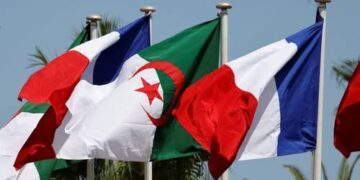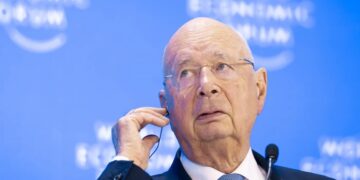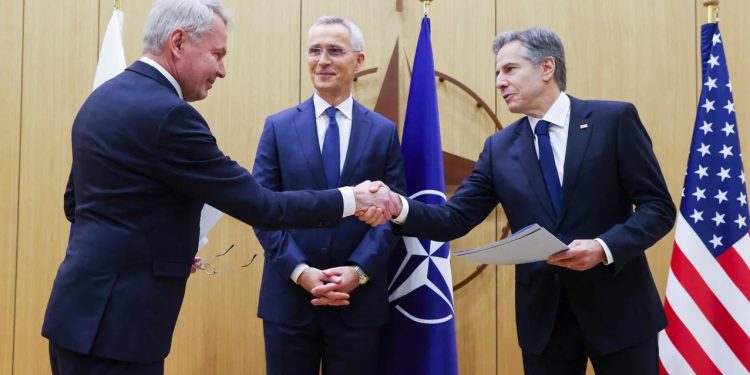By John Ikani
Finland has become the 31st member of the North Atlantic Treaty Organization (NATO), adding some 1,300 kilometers (830 miles) to the alliance’s frontier with Russia.
The formal ceremony took place at NATO headquarters in Brussels on Tuesday and was attended by US Secretary of State Antony Blinken and NATO Secretary General Jens Stoltenberg. Finnish Foreign Affairs Minister Pekka Haavisto sealed the accession.
The Finnish presidency hailed the event, noting that “Finland has today become a member of the defense alliance NATO. The era of military non-alignment in our history has come to an end. A new era begins.”
The statement also emphasized that NATO membership maximizes Finland’s own security, while also strengthening its international position and room for maneuver.
As a partner, Finland has long been an active participant in NATO activities, and will now make a contribution to NATO’s collective deterrence and defense.
The move marks a significant blow to Russian President Vladimir Putin, who has long sought to undermine NATO and demanded that the bloc refrains from further expansion before invading Ukraine.
Finland and Sweden, both previously non-aligned, have sought protection within NATO as a result of Russian aggression. However, Sweden’s attempt to join the bloc has been stalled by alliance members Turkey and Hungary.
On the eve of Tuesday’s ceremony, NATO Secretary General Jens Stoltenberg declared that “it will be a good day for Finland’s security, for Nordic security, and for NATO as a whole.”
But Russia has warned that further NATO expansion will not bring more stability to Europe, and has threatened to scale up forces near Finland if the alliance sends any troops or equipment to the new member country.
“We will strengthen our military capabilities in the west and northwest if NATO members deploy forces and equipment on Finnish territory,” warned Russia’s Deputy Foreign Minister Alexander Grushko.
Kremlin spokesperson Dmitry Peskov reiterated that Finland’s accession will force Moscow to “take counter-measures to ensure our own security, both tactically and strategically.”
Russia previously shared about 1,215 kilometers (755 miles) of land border with five NATO members.
Finland’s accession more than doubles NATO’s land border with Russia, making it a significant milestone for the alliance.
Finland’s NATO membership guarantees the country access to the resources of the entire alliance in the event of an attack, including the protection offered by NATO’s Article 5 principle, which states that an attack on one member of NATO is an attack on all members.
This principle has been a cornerstone of the alliance since it was founded in 1949 as a counterweight to the Soviet Union.
NATO membership also enables better integration of Finnish forces in training and planning with NATO allies.
Finland has already been working with NATO as a partner, with its troops regularly participating in NATO exercises.
The Finnish Defense Force operates some of the same weapons systems as other NATO members, including US-made F/A-18 fighters, German-designed Leopard main battle tanks, and K9 Howitzers used by Norway and Estonia, among others.
Finland has also signed onto the F-35 stealth fighter program, which will allow its air force to work seamlessly with NATO members, including the US, UK, Norway, Italy, Canada, Poland, Denmark and the Netherlands.
A report from the Washington-based Wilson Center highlights three key areas where Finland benefits NATO: reserve forces, technology access, and artillery forces.
The report points out that Finland’s artillery forces are the largest and best-equipped in Western Europe, with some 1,500 artillery weapons, including 700 Howitzer guns, 700 heavy mortars, and 100 rocket launcher systems, providing more artillery firepower than the combined militaries of Poland Germany, Norway, and Sweden.



































